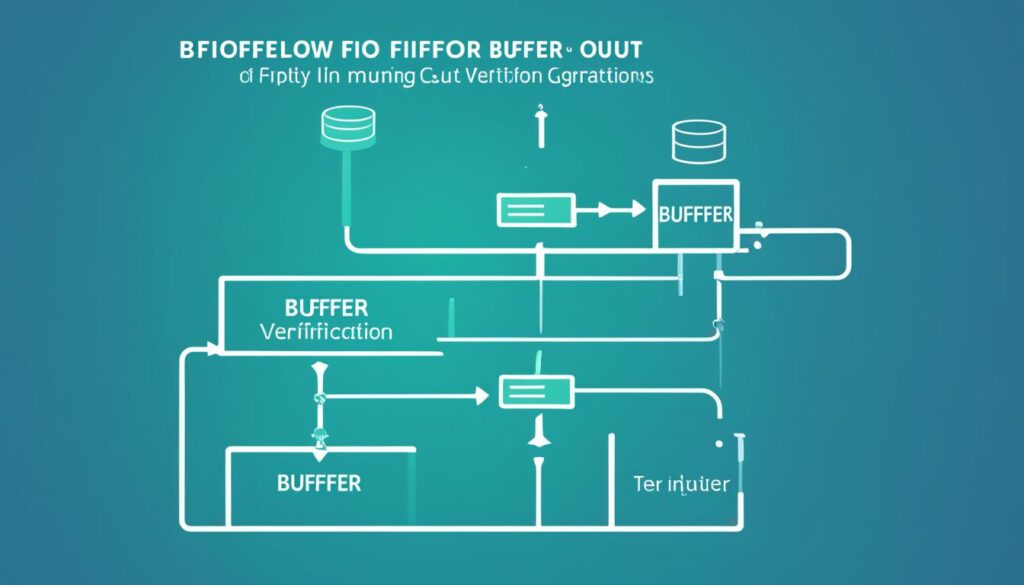Handshake protocols are an important aspect of CDC (clock domain crossing) analysis. As clock domain crossings pose challenges for system-on-chip designers, it is crucial to have effective solutions for verifying FIFO- and handshake-based synchronization mechanisms.
At [company name], we understand the significance of handshake protocols in ensuring health safety and preventing disease transmission. That’s why we have developed cutting-edge CDC techniques to address these challenges and provide reliable results.
Traditional CDC tools often struggle to accurately detect and verify handshake structures, leading to false violations. However, our new CDC tools utilize static analysis techniques to identify and verify handshakes effectively, reducing false violations and ensuring the correctness of clock domain crossings.
These advanced tools combine functional and structural analysis to detect various synchronization schemes, including more complex handshakes and FIFO-based schemes. By automatically recognizing and verifying handshake structures, we enhance productivity and reduce risk in the development of SoCs.
With our state-of-the-art CDC techniques, you can confidently address handshake protocols, improve verification accuracy, and accelerate your SoC development process. By embracing these CDC techniques, we can collectively ensure health safety and prevent disease transmission effectively.
Table of Contents
Challenges in Verifying Handshake Synchronizers
Verifying handshake synchronizers can be a challenging task, especially when using traditional CDC tools. These tools often fail to detect and functionally verify handshake structures, leading to potential issues in the verification process.
Handshake synchronizers rely on request-acknowledge protocols, where a request signal is sent from the source domain, and the destination domain responds with an acknowledge signal. The main challenge lies in accurately detecting and verifying the functionality of handshakes, ensuring that they are properly synchronized. Failure to do so can result in false violations in the verification process.
Many traditional CDC tools struggle to recognize properly synchronized crossings, often reporting them as unsynchronized and generating a long list of false violations. The process of manually filtering these false violations can be time-consuming, tedious, and prone to human error.
To overcome these challenges and ensure efficient verification of handshake synchronizers, automatic identification and verification techniques are essential. These techniques utilize advanced algorithms and methodologies to accurately detect and verify handshake structures, reducing the occurrence of false violations and ensuring the correct functioning of clock domain crossings.
Simulation and False Violations
Simulation plays a critical role in verifying handshake synchronizers. It allows designers to test the functionality of these structures in a controlled environment. However, traditional CDC tools may not provide accurate results during simulation, leading to false violations being reported.
False violations occur when the tools fail to recognize the properly synchronized nature of handshakes, erroneously flagging them as unsynchronized. This can lead to confusion and a significant amount of time wasted on investigating and filtering through false violations.
By utilizing advanced verification techniques and tools specifically designed for handshake synchronizers, designers can significantly reduce false violations and streamline the verification process.
Solutions for Verification Challenges
To address the challenges in verifying handshake synchronizers, designers can adopt the following strategies:
- Utilize specialized CDC tools that offer comprehensive support for detecting and verifying handshake structures.
- Implement advanced simulation techniques that accurately model the behavior of handshakes.
- Leverage static analysis methodologies to identify and address potential synchronization issues.
- Employ formal verification techniques to exhaustively analyze the functionality of handshake synchronizers.
By incorporating these solutions into the verification process, designers can improve the accuracy and efficiency of verifying handshake synchronizers, reducing false violations and ensuring the correctness of clock domain crossings.
Next, we will explore the specific techniques and methodologies used for verifying FIFO synchronizers, another critical aspect of clock domain crossing analysis.
| Challenges | Solutions |
|---|---|
| Traditional CDC tools fail to detect and verify handshake structures accurately. | Utilize specialized CDC tools with comprehensive support for handshake verification. |
| False violations are reported due to inaccurate recognition of properly synchronized handshakes. | Implement advanced simulation techniques and use advanced verification methodologies. |
| Manual filtering of false violations can be time-consuming and error-prone. | Leverage static analysis and formal verification techniques to automate the verification process. |
Verifying FIFO Synchronizers
FIFOs (First-In-First-Out) are widely used for efficient data transfer between different clock domains. Asynchronous FIFOs are employed when the source and destination reside in separate clock domains, while synchronous FIFOs are utilized for data transfer within the same clock domain. Verifying FIFO synchronizers presents unique challenges that require accurate detection and functional verification of various structures, including empty- and full-flag calculation and data read to the destination domain.
Traditional CDC tools often fail to recognize the presence of FIFO synchronizers, leading to false synchronizer violations. Designers are then tasked with manually filtering through unsynchronized crossing reports, which can be a time-consuming process. However, it is crucial to perform comprehensive verification of FIFO synchronizers to uncover hidden bugs and avoid potential design issues.
To ensure the accurate verification of FIFO synchronizers and facilitate proper data transfer between clock domains, efficient detection and verification techniques are essential. These techniques enable designers to identify and verify the functionality of FIFO structures, ensuring reliable data transfer and reducing the risk of synchronization issues.
The Importance of Accurate Verification
Accurate verification of FIFO synchronizers plays a critical role in ensuring the seamless transfer of data between clock domains. By detecting and verifying structures such as empty- and full-flag calculation and data read to the destination domain, designers can confirm the proper functioning of FIFOs and prevent potential issues that may arise during data transfer.
Effective Detection and Verification Techniques
To address the challenges associated with verifying FIFO synchronizers, designers can adopt efficient detection and verification techniques. These techniques utilize static functional verification to exhaustively verify the functionality of FIFOs. By examining the components of FIFOs, such as memory blocks, register files, pointer counters, gray encoders, and comparators, designers can accurately identify FIFOs within a design and verify them for overflow and underflow conditions.
Unlike traditional CDC tools that often fail to recognize FIFO synchronizers, static functional verification enables designers to thoroughly verify these structures without the need for specifying FIFO attributes such as depth. This approach saves time and effort while still ensuring the proper functionality of FIFO synchronizers.
FIFO Synchronizer Verification: A Key Aspect of Clock Domain Crossing Analysis
Verifying FIFO synchronizers is a crucial aspect of clock domain crossing analysis. By accurately detecting and verifying these structures, designers can ensure the proper transfer of data between clock domains and minimize the risk of synchronization issues. Incorporating efficient detection and verification techniques for FIFO synchronizers enhances the overall reliability and performance of system-on-chip designs.
Techniques for Handshake Recognition and Verification
Recognizing and verifying handshake schemes requires several essential capabilities. Handshake recognition involves identifying various components of the handshake, including crossing detection, enable detection, source and destination controller identification, and request and acknowledge recognition. To successfully detect all the components and styles of handshaking design, thorough structural and functional analysis is necessary.
Once the handshake structure is recognized, verification becomes crucial. Handshake verification focuses on verifying the functionality of the handshake, including request and acknowledge behavior and the data capture window check. Ensuring that the request and acknowledge signals are properly synchronized and capturing data within the designated window are important aspects of handshake verification.
When it comes to verifying handshake schemes, static verification techniques prove to be the optimal choice. Static verification techniques provide exhaustive verification of handshake schemes, whereas simulation techniques and user-defined testbenches may only partially verify these designs, potentially leaving various bugs unresolved.
Static verification techniques utilize sophisticated algorithms and analysis to thoroughly examine the handshake structures. By applying static verification, designers can confidently identify and resolve any potential issues, reducing the risk of false violations and ensuring the correctness of clock domain crossings.
Integrating static verification techniques into the design flow allows for a more efficient and accurate verification process. Designers can benefit from the automation and thoroughness provided by static verification tools, reducing manual effort and improving productivity.
Overall, the integration of handshake recognition and verification techniques, particularly through static verification methods, enhances the effectiveness and reliability of clock domain crossing analysis. By employing these techniques, designers can minimize the risk of unsynchronized handshakes and ensure the smooth functioning of clock domain crossings.

Techniques for FIFO Detection and Verification
Efficient FIFO detection is essential for accurately identifying FIFOs within a design and examining their components. When verifying FIFO synchronizers, it is important to consider various elements such as memory blocks, register files, pointer counters, gray encoders, and comparators. By analyzing these components, we can ensure the proper functionality of FIFOs and prevent potential issues in data transfer between clock domains.
Once the FIFOs are recognized, it is crucial to verify them for overflow and underflow conditions. Static functional verification is a valuable technique in this process, as it allows for exhaustive testing of FIFO functionality. Rather than specifying FIFO attributes like depth, verification can be performed using read and write pointers, saving time and effort while still ensuring the accuracy of FIFO synchronizers.
Benefits of Static Functional Verification
Static functional verification offers several advantages in the detection and verification of FIFOs. Firstly, it allows for a comprehensive examination of FIFO behavior by analyzing read and write pointers. This approach ensures that FIFOs operate correctly and that data is transferred appropriately between clock domains.
Moreover, static functional verification eliminates the need for manual specification of FIFO attributes such as depth. By relying on read and write pointers, this technique streamlines the verification process, reduces the chances of human error, and improves overall efficiency.
Efficiency and Accuracy in FIFO Verification
By leveraging static functional verification techniques, we can achieve efficient and accurate FIFO verification. This approach enables designers to thoroughly examine FIFO components, detect potential issues, and ensure proper data transfer within clock domains.
With accurate FIFO detection and verification, system-on-chip designers can confidently integrate FIFO synchronizers into their designs, mitigating the risks associated with clock domain crossing. By reducing the chances of overflow and underflow, they can enhance the overall reliability and performance of their systems.
Below is a table summarizing the benefits of static functional verification in FIFO detection and verification:
| Benefits of Static Functional Verification |
|---|
| Comprehensive examination of FIFO behavior |
| Elimination of manual specification of FIFO attributes |
| Streamlined verification process |
| Reduced chances of human error |
| Improved efficiency |
| Enhanced system reliability and performance |
Static functional verification is a powerful technique that ensures the proper functioning of FIFO synchronizers within clock domain crossings. By leveraging the benefits of this approach, designers can minimize potential issues, save time, and ultimately deliver more reliable and efficient system-on-chip designs.

Conclusion
In conclusion, handshake protocols and FIFO synchronizers play crucial roles in clock domain crossing (CDC) analysis. Accurately detecting and verifying these structures is essential for ensuring the correctness of clock domain crossings and reducing false violations.
New CDC tools that utilize static analysis techniques have proven effective in automating the identification and verification of handshake and FIFO structures. These CDC tools improve productivity by reducing the tedious manual work required for filtering false violations.
Additionally, these tools enhance risk reduction in the development of system-on-chip (SoC) designs, ensuring that health safety is maintained and preventing disease transmission effectively. By embracing these CDC techniques, designers can optimize SoC verification processes, enhance productivity, and mitigate risks associated with design flaws.

